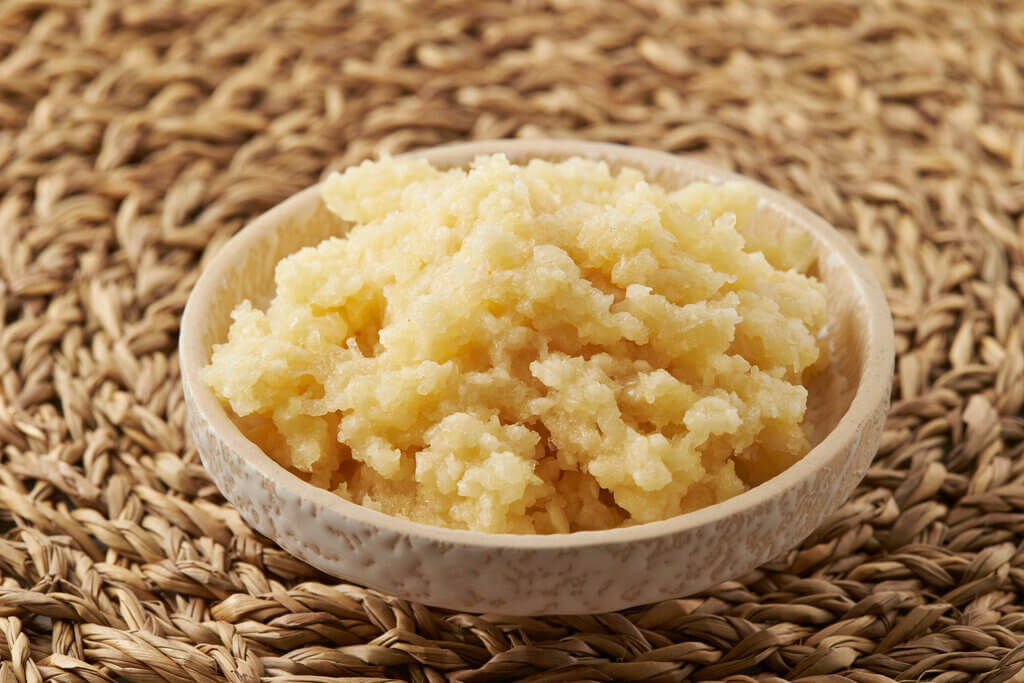Introduction to Minced Garlic To Cloves
Garlic is a culinary superstar, loved for its robust flavor and numerous health benefits. But did you know there’s a subtle yet significant difference between garlic cloves and minced garlic to cloves? While many home cooks reach for whole cloves when whipping up their favorite dishes, minced garlic can elevate your cooking game to new heights.
In the kitchen, efficiency matters. Whether you’re preparing a simple weekday meal or an elaborate feast, having the right ingredients at hand is key. Minced garlic offers not just convenience but also enhances flavors in ways that whole cloves sometimes can’t match. Join us as we explore the fascinating world of minced garlic to cloves versus cloves—discovering not only their unique histories and uses but also how this small change can make a big impact on your culinary creations!
The history of garlic and its uses in cooking
Garlic has a rich history that dates back thousands of years. Ancient civilizations, including the Egyptians and Greeks, revered it not only for its culinary uses but also for its medicinal properties.
In Egypt, workers building the pyramids consumed garlic to boost stamina and strength. Meanwhile, Greek athletes believed it enhanced performance in their athletic pursuits.
Throughout time, garlic spread across cultures. The Romans used it extensively in cooking and as a remedy against various ailments. In Asia, particularly China and India, garlic became integral to traditional medicine and cuisine.
Today, garlic is found in kitchens worldwide. It elevates dishes with its pungent aroma and bold flavor profile. From stir-fries to marinades, this versatile ingredient enhances everything from savory stews to fresh salads. Its journey through history showcases not just its importance but also our enduring love affair with this aromatic bulb.
What is the difference between minced garlic and garlic cloves?
minced garlic to cloves and garlic cloves are two distinct forms of this aromatic ingredient, often used in cooking.
Garlic cloves refer to the whole bulbs, which can be peeled and used as needed. Each clove packs a punch when it comes to flavor but requires peeling and chopping before use.
On the other hand, minced garlic to cloves is typically pre-chopped into small pieces. This process not only saves time but also ensures a more uniform distribution of flavor throughout dishes.
While fresh cloves offer a robust taste that some chefs prefer, minced garlic to cloves provides convenience without sacrificing too much on flavor.
Additionally, minced garlic tends to release its oils faster than whole cloves do, intensifying its aroma in your recipes almost instantly.
Benefits of using minced garlic over cloves
Minced garlic offers several advantages compared to whole cloves. First, it saves time in the kitchen. When you’re in a rush, pre-minced garlic to cloves can be a real lifesaver.
This form of garlic also packs an intense flavor punch. The smaller pieces release essential oils and compounds more effectively than whole cloves. This enhances the overall taste of your dishes.
Texture is another aspect where minced garlic to cloves shines. It blends seamlessly into various recipes, providing a consistent distribution of flavor throughout sauces, dressings, or marinades.
Additionally, using minced garlic can help avoid that raw bite often associated with larger chunks. Instead, it creates a mellow garlicky essence that elevates any meal without overpowering other ingredients.
Incorporating this versatile ingredient allows for creativity in cooking while simplifying preparation tasks significantly.
A. Convenience and time-saving
Minced garlic to cloves offers a level of convenience that whole cloves simply can’t match. When you’re in the kitchen, time is often of the essence. Each minute saved can make a difference, especially during busy weeknights.
With minced garlic, there’s no peeling or chopping required. You open the jar and add it directly to your dish. This streamlining allows for quicker meal preparation without sacrificing flavor.
In addition to saving time, using minced garlic minimizes cleanup. There’s no need for extra utensils or cutting boards covered in sticky residue after handling fresh cloves.
For those who enjoy cooking but find limited time an obstacle, minced garlic to cloves provides a practical solution that fits seamlessly into any recipe. It allows you to focus on creativity instead of tedious prep work while still delivering delicious results.
B. Enhanced flavor
Minced garlic brings a robust and intense flavor to dishes that whole cloves often can’t match. When garlic is minced, its cell walls break down, releasing essential oils and sulfur compounds. This process enhances the taste profile dramatically.
Unlike cloves, which may impart a milder essence when cooked whole or sliced, minced garlic to cloves infuses dishes with a sharper punch. It melds beautifully into sauces, marinades, and dressings.
When sautéed, it caramelizes quickly, creating rich notes that elevate any meal. The aroma alone is enough to entice anyone nearby.
Moreover, because of its smaller size, minced garlic to cloves distributes evenly throughout your dish; every bite packs flavorful goodness. Whether you’re cooking pasta or whipping up a stir-fry, this ingredient ensures each forkful bursts with zestful delight.
C. Better texture and consistency in dishes
Using minced garlic can significantly improve the texture and consistency of your dishes. Unlike whole cloves, which can present a stronger bite, minced garlic to cloves blends seamlessly into various recipes.
When you mince garlic, it releases oils and juices that infuse flavor throughout the dish. This results in an even distribution of taste, ensuring every bite is flavorful.
In sauces or soups, for example, minced garlic dissolves beautifully, creating a smooth base without any distracting chunks. This makes it particularly appealing in creamy or liquid-based meals where you want to maintain a cohesive texture.
Additionally, when cooked properly, minced garlic to cloves caramelizes nicely. This not only adds depth but also enhances the overall mouthfeel of your dish. The contrast between soft ingredients and tender bits of minched garlic elevates culinary experiences to new heights.
How to properly mince garlic for optimal results
Mincing garlic properly can elevate your dishes to new heights. Start with fresh bulbs; the flavor is unmatched.
Begin by peeling the cloves. A quick smash with the flat side of a knife makes this effortless. Remove the papery skin, and you’re ready to go.
Next, chop off the root end for a clean cut. Lay your knife blade over a clove and apply slight pressure while rocking it back and forth. This technique helps release essential oils.
Now, it’s time to mince! Cut across the clove into small pieces, then turn them 90 degrees and slice again in tiny sections. The finer you go, the more potent their flavor becomes.
For an extra burst of taste, sprinkle a pinch of salt over minced garlic to cloves before chopping further. It acts as an abrasive that aids in releasing juices and intensifying flavors—perfect for any recipe!
Recipes that highlight the use of minced garlic
Minced garlic is a versatile ingredient that can elevate countless dishes. One standout recipe is garlic butter shrimp. The minced garlic infuses the dish with robust flavor, perfectly complementing tender shrimp.
Another delightful option is roasted vegetable medley. Toss your favorite veggies in olive oil, sprinkle them with minced garlic, and roast until golden. This creates an irresistible side dish bursting with aroma.
For pasta lovers, consider making aglio e olio. Sauté minced garlic in olive oil, then toss it with spaghetti and red pepper flakes for a simple yet satisfying meal.
Don’t forget about marinades! Combine minced garlic with lemon juice, herbs, and olive oil to create a delicious marinade for chicken or fish.
These recipes showcase how easily minced garlic to cloves enhances flavor profiles while saving time in the kitchen. Enjoy experimenting with this aromatic ingredient!
Potential downsides of using minced garlic
While minced garlic offers numerous advantages, there are some downsides to consider. One major concern is its potency. Minced garlic can have a stronger flavor than fresh cloves, which may overwhelm certain dishes.
Another aspect to keep in mind is shelf life. Freshly minced garlic can lose its aroma and taste quickly when stored improperly. Unlike whole cloves, it doesn’t last as long in the pantry or refrigerator.
Health-wise, the pre-minced varieties often found in grocery stores contain preservatives that might not appeal to everyone. These additives could diminish the health benefits typically associated with raw garlic.
For cooking enthusiasts who enjoy preparing meals from scratch, using minced garlic might feel less satisfying than crushing or chopping whole cloves by hand. The tactile experience of working with fresh ingredients can enhance the cooking process itself.
Conclusion
Garlic has been a staple in kitchens around the world for centuries. Its rich history dates back to ancient civilizations, where it was prized not only for its flavor but also for its medicinal properties. Today, garlic continues to play an essential role in cooking and offers numerous health benefits.
When comparing minced garlic to cloves to whole cloves, there are notable differences. Minced garlic is simply finely chopped or crushed cloves of garlic that provide quicker integration into dishes than whole cloves. This method allows for a more potent flavor release while enhancing the aroma—something every home cook values.
Using minced garlic over whole cloves brings several advantages. First and foremost is convenience and time-saving: mincing takes less time than peeling and chopping multiple fresh cloves each time you cook. For those who lead busy lives yet still want delicious meals, minced garlic to cloves can save precious minutes in food preparation.
Additionally, minced garlic delivers an enhanced flavor profile that contributes depth to your recipes. It disperses evenly throughout dishes like sauces and marinades, ensuring that every bite is imbued with garlicky goodness without overwhelming any single aspect of your meal.
Another benefit lies in texture consistency; when using minced garlic, you achieve a uniform distribution within your dish rather than large chunks of clove which might alter the eating experience unexpectedly.
To achieve optimal results when mincing garlic at home, start by choosing fresh bulbs free from blemishes or sprouts. Using a sharp knife or a microplane grater will yield fine pieces perfect for incorporation into various recipes—from pasta sauces to dressings.
Speaking of recipes, countless dishes highlight the joys of using minced garlic to cloves: think creamy mashed potatoes with roasted vegetables drizzled with olive oil infused with freshly minced garlic—or zesty shrimp scampi ready in under 30 minutes!
However, it’s worth noting some potential downsides too—minced store-bought versions may lack freshness compared to homemade options due to preservatives added during processing. Freshness directly impacts taste; so if you’re aiming for peak flavors consider sticking mainly with fresh-minced varieties

















